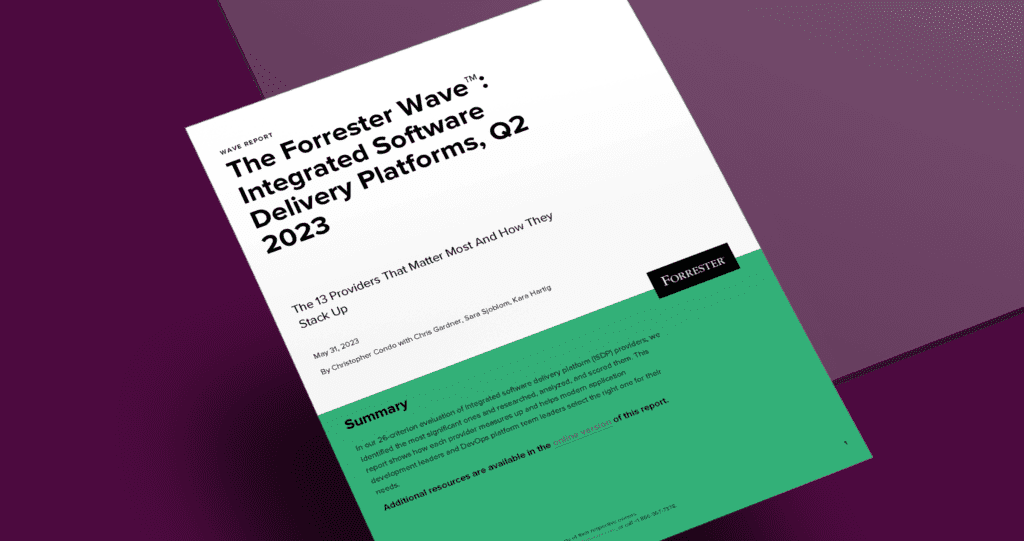Although Oracle EBS has been around for some time, its popularity as an enterprise resource planning solution remains high. In fact, this functional business suite still addresses a range of needs—from customer relationship management (CRM) to complex decision processes.
Despite these many positive features, the Oracle E-Business Suite (EBS) has experienced a few setbacks as the software industry moves toward DevOps and DevSecOps. In addition, it’s becoming increasingly difficult for companies using Oracle EBS to automate processes and handle cloud migration, especially on top of other modernization issues.
Oracle EBS goes back over twenty years. In the tech industry, that’s a lengthy period. And while EBS can handle a large global business’s diverse needs, that very complexity makes maintenance and development a challenge.
A company may use EBS to manage customer relationships, supply chains, finances, human resources, and many other activities. Newer features for analytics and business intelligence add to the mix. Although Oracle has acquired and released more recent products, EBS is simply too well-established to be uprooted.
For businesses that want to continue using Oracle EBS—and take advantage of more recent software advances—there is a solution. FlexDeploy brings modern DevSecOps practices to Oracle EBS. Features such as automation eliminate the errors and costs of manual procedures. Plus, there’s more consistency and efficiency, and the system works seamlessly with your existing toolchain.
Challenges and Complexities of Using DevOps for Oracle E-Business Suite (EBS)
Using Oracle EBS is popular—but that doesn’t mean it’s simple. Even less simple is using Oracle EBS with up-to-date DevOps methodology. It’s an older technology that lacks interfaces for modern integrations. Furthermore, the code is not organized into effective applications for running DevSecOps practices.
Organizations using Oracle EBS may have thousands of customizations. Additionally, they may have adjusted their processes to accommodate the complex deployment, making it even more difficult to adapt to new developments.
All these customizations can result in an inflexible architecture—the problem that FlexDeploy is designed to solve. If you have a lot of code written specifically for your company, making changes tends to be cumbersome. During an application upgrade, you’d need to move all your customizations extremely carefully.
Oracle EBS also makes it difficult to collaborate, and collaboration is at the core of DevOps. In the absence of effective communication, the release process may become spread out and messy. Further, without sharing lessons, it’s difficult to improve performance among developers and other contributors, both internal and external.
Automation is another core aspect of DevOps. Using Oracle EBS with manual procedures to track and audit can make regulatory compliance a challenge—to say the least. You would have to collect information from your manually updated sources, which may include spreadsheets. The procedure is slow and tedious. Moreover, it will likely fail to find all the relevant information for customizations and your toolchain.
Overall, there are multiple difficulties when attempting to use DevOps with Oracle EBS. These include the complex upgrade path, vulnerabilities to modern risks, and the constraints inherent in a legacy system. Let’s take a more in-depth look at some of these issues.
Complicated Upgrade Considerations
Oracle EBS users often have trouble upgrading their installations. EBS typically uses numerous customization files rather than an organized application structure, complicating upgrade efforts. For years, organizations have struggled every time there’s a new release.
Each upgrade requires not just moving data but also adapting employees and related technologies to the changes. However, upgrading EBS and the applications built on it isn’t optional, as newer versions contain important security updates, performance improvements, and other features.
When you upgrade Oracle EBS, prepare for challenges throughout the process. It can literally take months of testing to ensure a safe upgrade—even then, there will likely still be some obstacles. Furthermore, you may have to switch out certain components and make manual adjustments. Here, an automation tool goes a long way toward aiding the upgrade process.
One of the bigger complications relates to data. Although it’s problematic to move all the necessary data from the old to the new system, you can’t afford to leave anything behind. This can be a significant stumbling block for some companies.
Upgrading the system might be complicated. However, when Oracle discontinues support for one version, companies are forced to adapt. As much as you need those security patches, Oracle will no longer proved critical fixes and workarounds—or regulatory and legislative updates.
Doing an EBS upgrade properly entails several rounds of testing in addition to planning the upgrade itself. Then there’s the post-upgrade work to ensure the system’s running smoothly, without any errors or lost data. Additionally, you’ll need to help users deal with possible issues that may arise after the upgrade.
Post-upgrade, testing works to protect against broken features. Traditionally, this may require some degree of manual work, scripting, and documentation. Ideally, you should be able to automate as much of the process as possible.
Oracle EBS is Vulnerable to Modern Security Risks
Cybercriminals are constantly advancing their techniques, exposing Oracle EBS to further risks. In some cases, these vulnerabilities could even allow your entire EBS installation to be hijacked—sensitive company information included.
While Oracle works to fix these vulnerabilities, EBS is an older product, making it more susceptible to cyberattacks. And given the challenge of using DevSecOps approaches with E-Business Suite, it could be extremely difficult to counter these threats.
As the internet has grown, methods employed by hackers have become ever more sophisticated. Oracle EBS installations connected to the internet pose a threat to the organizations that use them. Recent vulnerabilities have made it possible for criminals to steal money through electronic funds transfers and checks, as well as wiping evidence of their crimes.
In addition to financial crimes, vulnerabilities in Oracle EBS expose business and personal information stored in the database. This could affect employees and customers, or interfere with business operations. Companies that let protected information leak may also fall out of regulatory compliance, facing fines.
These risks illustrate the obstacles facing Oracle users in the absence of appropriate security practices. Because it’s difficult to employ DevSecOps with EBS, such problems are quite common. And they’re just the tip of the iceberg.
Inherent Risks of a Legacy System
Even as Oracle EBS continues to serve its user base, there are risks associated with keeping a legacy system around. Many users have become so comfortable with EBS that migrating seems unfathomable. That said, the cost of complacency can be unacceptably high.
Disasters such as fires pose a greater risk for legacy systems—Oracle EBS included. Furthermore, any customizations lost will be much harder to replicate. And while cloud software has more backup resilience, if you’re running traditional on-premises EBS, then there’s an added risk.
Although the opportunity cost of not running newer software isn’t initially apparent, it is significant. There’s a reason that organizations do eventually upgrade. Each release adds features and security enhancements. Over time, these build up to make a qualitatively better program.
Newer enterprise resource planning (ERP) systems facilitate DevSecOps from the ground up. You can achieve much the same effect on Oracle EBS with FlexDeploy. However, without FlexDeploy you may struggle to keep up with the automation and other techniques that have become standard and necessary.
The direct financial costs of maintaining a legacy system also add up. You have to pay the experts who keep the EBS running. However, these same experts are becoming ever more scarce as the software ages. As such, Oracle EBS doesn’t have the same pool of skilled workers it once did.
Oracle EBS Best Practices for DevOps
DevOps is an established system that’s increasingly used in new software as well as with Oracle EBS to increase interoperability. In addition, it’s an agile way to meet and exceed the demand for rapid innovation amid complex environments.
There are, however, several challenges to using DevOps with enterprise resource planning. For instance, as Oracle EBS has been around for a while, it lacks modern interfaces for integration and DevOps practices. That said, it’s still possible to derive maximum value from Oracle EBS software—provided you take the right approach. This is where a powerful tool like FlexDeploy can step in to deliver automation for DevOps.
It’s simply not practical to take a DevOps approach with manual procedures in Oracle EBS. What you need is the right development tool to optimize processes. Flexagon is the ONLY holistic DevOps platform for Oracle EBS and the entire Oracle ecosystem.
Leverage the Power of FlexDeploy for Oracle EBS
It’s essential to use developer tools to enhance your capacity to deal with Oracle EBS challenges. Even if you have customizations written in numerous programming languages, the FlexDeploy platform can give you the leg up you need to tame that complexity. It’s a lot more efficient than managing customizations manually.
Automation itself is considered a DevOps best practice, and FlexDeploy brings this approach to Oracle EBS. It can automatically pull in code from your source control repositories, build and version packages, test the code, and deploy to multiple EBS environments.
FlexDeploy improves management of Oracle EBS for cloud migration. You can also use it for a combination of cloud and on-premise hosting. Its extensive automation capabilities and traceability encourage best practices, as you take on a more modern approach to software development.
Shift-left testing and developer-first security are two of the main DevSecOps features. Essentially, you’re aiming to incorporate testing and security early in the process and extend it throughout the software lifecycle. FlexDeploy facilitates these best practices by automating testing and enhancing team communications.
Improving your software delivery isn’t a one-time event. It’s important to keep learning and progressing over time. As you collect data, see what works and what doesn’t, you can refine your practices to keep operations, security, and development efforts ahead of the curve.
Use Source Control Management
Best practices ensure that you navigate Oracle EBS effectively to achieve your company’s goals. Some DevOps best practices include using source control management (SCM) for all your code and configuration. Source control tracks modifications, including the exact time and the author.
This is vital information for managing fast-paced development on overlapping files. For instance, whenever you want to find which commit added a bug or to roll back edits, you need the visibility of source control.
FlexDeploy integrates with the most common source control systems like Git and Subversion. That makes it straightforward to manage your code updates reliably and import source into builds without any hassle.
Within your SCM, a best practice is to make use of the branching features. By default, the system tracks your modifications in a single line, with one change after another. However, source control managers can also create branches—like those on a tree—that split off from the main line. Further, it’s possible to merge code from one branch into another.
Branches help with organizing groups of code changes. For example, you can work on an experimental branch while also maintaining a stable branch. This allows for much faster progress than would be possible without branches. At the same time, it also preserves your established code. As such, branching is key to effective DevOps.
Whenever a developer makes a commit, that commit should include a comment in source control. Even a small description at the time of writing can make a huge difference later when debugging. Descriptions are also useful during code reviews. Further, you can integrate with other development tools by including data such as issue numbers in the commit comment.
Follow CI/CD Delivery Best Practices for Oracle EBS

Continuous integration (CI) and continuous delivery (CD) make up important parts of modern software production with DevOps. FlexDeploy is the premier tool for performing CI/CD with Oracle EBS.
With continuous integration, your developers should commit code into a common repository—multiple times every day. This keeps the codebase up-to-date with fresh lines. For CI, the system uses webhooks or alternative methods to automate builds. Then you can build more often, breaking big projects into smaller pieces.
Building can notify you in advance of any difficulties that crop up. Therefore, instead of having problems linger under the surface, they’ll fail while still affordable to fix. Developers will have an easier time working on bugs when detected early, and there’s less chance those bugs will make it to end users.
Continuous delivery brings fast and frequent modifications to users. It’s the equivalent for deployment into production of continuous integration. With automation, releasing upgrades is part of the routine. Further, you need automation to keep pace with CD, as this may involve hundreds of test cases per day!
FlexDeploy automates testing and deployment to enable CI/CD best practices. Use “pipelines” to ensure the consistent propagation of your modifications across environments. Regardless of how complex these environments are for development, testing, and production, automation glides through the process effortlessly. This removes the need for tedious and error-prone manual actions.
In FlexDeploy you can automate tests, builds, and deployments, as well as server restarts and other management tasks. At the same time, if you do need manual intervention—such as an individual’s approval before proceeding—it’s easy to incorporate manual tasks into the automated pipelines for the best of both worlds.
Utilize FlexDeploy for Integrated Automated Testing in the Delivery Lifecycle

FlexDeploy helps companies automate testing and other processes. Because automation is a key part of DevOps, this is an exceedingly useful tool. The manufacturer HNI uses FlexDeploy with Oracle Cloud Infrastructure (OCI) to modernize its ERP apps in the cloud. Now, they spend half as much time and money on delivery. Moreover, HNI eliminated 98% of deployment errors.
In a bid for increased agility, HNI moved their Oracle EBS, along with other layers of their technology stack, to OCI. The overarching goal is to move from manual processes and scripts to fully automated testing in the delivery lifecycle.
Using FlexDeploy, the manufacturer could harness teamwork through the newly automated release pipeline. Furthermore, leveraging continuous integration and delivery meant a more efficient software creation process. This streamlined route catches errors to prevent deployment failures—and simultaneously lowers development costs.
HNI is taking advantage of FlexDeploy’s integrated support for Oracle EBS. The development tool natively understands EBS, making it simple to manage servers as well as produce and maintain customizations. FlexDeploy also recognizes any EBS object types you might use, such as AOL, OAF, and workflows.
In HNI’s case, they use release pipelines to control QA processes from development to delivery. The build automatically goes through the necessary tests. Code is more rigorously tested, boosting quality. In addition, you can define your own stages and gates to make a pipeline that works for your software.
The entire process integrates with your toolchain, making it easy to interconnect source control repositories, test tools, issue tracking systems, and more. HNI conducts unit tests, performance tests, and other tests with immediate feedback for better visibility. The whole software delivery lifecycle works as a single unit.
Use Tools to Improve Performance
Using tools well will dramatically enhance your development speed and quality. For instance, it’s a good idea to adhere to naming conventions and standard rules that you use for metadata or other properties. This immediately tells people what to expect. If you have a standard method for naming branches of code, you can have FlexDeploy automatically determine the appropriate pipeline.
In general, it makes sense to use the right tool for the job. There are many jobs in DevOps, so there are numerous tools to use. You’ll want to employ best-of-breed tools for source control, test and release automation, issue tracking, build and deployment, and continuous integration and delivery.
FlexDeploy integrates with multiple tools, combining their strengths to achieve the best result. At the same time, it’s the best available tool for managing Oracle EBS with DevOps. Using the right tool translates into higher quality output. Moreover, it’s possible to drastically simplify your software lifecycle from development and testing to release.
A valuable best practice for DevOps on Oracle EBS—and also more widely—is the ability to organize with intent. Your code, which should be in SCM, is much easier to read and edit if it’s divided into directory structures and repositories appropriate for each of your systems or applications.
Package your customization files intelligently for a build. By default, Oracle EBS lacks a mechanism for organizing all the right customization files. FlexDeploy fills this gap with feature packages. You can collect your customization files, version them, and deploy them to any number of EBS cases.
Get the Most Out of Oracle EBS With Flexagon
Flexagon’s FlexDeploy supercharges Oracle EBS for your DevOps needs. Now you can extract modern performance and integrate with popular tools. Software development becomes more automatic and consistent, while releases improve in quality.
FlexDeploy streamlines the development, deployment, and maintenance of Oracle EBS applications. This lets you keep your customizations while still getting the compelling advantages of DevSecOps. That includes automating complex procedures with a simple interface to deliver powerful results.
By modernizing Oracle EBS, you’ll have more control over this older technology, thus minimizing risks. Instead of struggling to manage your customizations with slow and expensive manual approaches, use FlexDeploy to deliver better software faster. It is supported on-premise and as you migrate and adopt EBS on OCI, maintaining your investment in DevOps practices and processes.
FlexDeploy is a comprehensive DevOps platform, the likes of which you won’t find anywhere else for Oracle EBS. It’s a solution that supports your entire software development lifecycle. As a result, companies are already seeing dramatically faster software delivery and higher quality releases.
Contact Flexagon to request a demo and see what FlexDeploy can accomplish for you!



